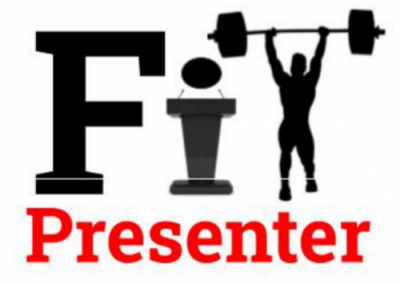Would you be surprised to know that Greenland is not green?
In fact, Iceland is greener than Greenland. Erik the Red wanted his fellow Norsemen to settle the frozen Arctic land mass, so he gave it a more attractive name to stimulate exploration. The same goes for the Cape of Good Hope. Portuguese sailors first named Africa’s southern tip “Capa das Tempestades,” or Cape of Storms, about 600 years ago. Vikings and far eastern traders alike must have known the value of good marketing, albeit dangerous in its deception. Centuries before the tourists arrived to surf alongside penguins near Cape Town, hundreds of seagoing vessels were torn apart in the tides along that very same coastline.
What about our industry?
Do we have any stormy capes packaged as products of good hope in the fitness game? Oh, maybe just a few.
In the fitness industry, you can tell the truth and make a decent living, or you can lie through your teeth and make a fortune.
Unlike the misconceptions that we create in our own mind, stormy capes are designed to deceive. The marketers succeed only when the product fails to deliver. They lure their customers with good hope and leave them shipwrecked.
We know that our audience, just like our clients, have pinned their hopes on mythology. For the uninformed, watching infomercials and reading internet pop-up ads count as research. They want to be told that it’s easy to reverse 30 years of inactivity with 30 days of meager effort. They embrace the lie.

As fitness industry professionals, we take on the role of tactfully fixing the clients’ hard wiring to believe the gimmicks and the infomercials.
You can’t confront their fantasy with harsh reality. To tell them outright that they are wrong is to say that they have never learned anything. We are not in this business to win arguments. We are here to win customers and clients. Our job is to show them that the hard way is easier than they think.
Now comes the fun part. What do we do about it?
How do we win people over to rational thinking? The first rule is that you can’t save everyone. I began selling retail exercise equipment when the top fat-burning craze was to pop a fistful of ephedrine and hook up an ab zapper while you watch the Osbournes. People came into the store looking for said-named ab zap technology and we had to kindly turn them away. Did I ever try to lead them toward a multi-stack home gym in lieu of a battery operated gizmo? I suppose. It never worked. What’s the lesson? Let a slug be a slug. If they want the easy fix, let them keep looking.
Now let’s bring in an audience. Imagine that you have invited a group to the gym for a workshop on training for the fitness beginner.
How far down the “there is no Easter bunny” rabbit hole do you want to take them? Start with any misconceptions that interfere with your presentation. If you showcase your cardio circuit and someone confuses the high-quality commercial grade elliptical trainer for a Gazelle, then you have to intervene and defend your reputation. If they want a recommendation for a good diet pill, you have to tell them that there’s no such thing. Pills are not part of anybody’s diet.
What about dedicated athletes and gym regulars?
It is easy to dupe a newcomer, but what about the people who supposedly know better? Can they be lured by good hopes into their own personal shipwreck? Let me answer that question with another question.
What are three ways that the Paleo diet is consistent with the paleolithic era? (Cue the Jeopardy music)
If you think that prehistoric beings gathered their foodstuffs by following the GPS on their Range Rovers to the Whole Foods parking lot, perhaps you can use a crash course in anthropology. The Paleo app on your smartphone that helps you find the right radishes and free range chicken breasts hardly pays tribute to the homo sapiens who first discovered fire. Aside from the less primitive ways that we find nutrition these days, it turns out that the original paleolithic diet was high in carbohydrates (and protein sources that you won’t find in a high-end supermarket).
Did fitness novices who order gadgets online in the middle of the night buy into the paleo diet? No!
The so-called leadership of this industry endorsed it. When the craze first hit, we were treated to countless social media pics of refrigerators stocked with raw meat, and slogans like “Train like a madman, eat like a caveman.”
Before we had identity politics, we had identity nutrition.
Let me raise a frosty Dr. Pepper and pound a sleeve of extra-gluten fig newtons before I continue.
Now let’s go back to the audience, this time a more informed public. Are you going to stand in front of a group of musclemen in shrink-wrapped T-shirts alongside loveless hard-bodied women with canvas shoes and purple bandanas and simply say, “I’m right and you’re wrong?” Write me into your will before you try that.
Start with the FIT System
Step number one in the FIT system is to filter the audience's background knowledge from their misconceptions. Start with their favorite infomercials, then move on to stormy capes that their clients have believed in. Let them prove your point for you. Then they can re-evaluate the crazes that they have previously bought into. It is much easier for them to identify their own false beliefs than for you to tell them. During the presentation, the same rule applies as above. The only misconceptions worth addressing are anything that interferes with your presentation.
The demolition derby
There seems to be a demolition derby in the fitness industry to promote the most awful gimmick. In some cases, the more wrong you are, the more unique you appear to the average consumer. We have to contend with distorted definitions of functional training, phony diet plans like Paleo and Ketogenic (repeat after me, ketones are poison), gadgets that promote spot reduction, and celebrities and pro athletes who endorse canned battery acid and call it an energy drink. We can only rant so long about the truth before our clients stop listening and start fitting us for a tinfoil hat.
This is the life we have chosen
If you can accept that your clients wake up the day after a workout and curse the day you were born, you can accept that they will also fight you to defend their misconceptions. They fight twice as hard when they have invested money into their cleverly marketed false beliefs. However, if you can help them navigate the rough waters of the stormy capes of the fitness industry, it will be smooth sailing on calm waters as you continue.













